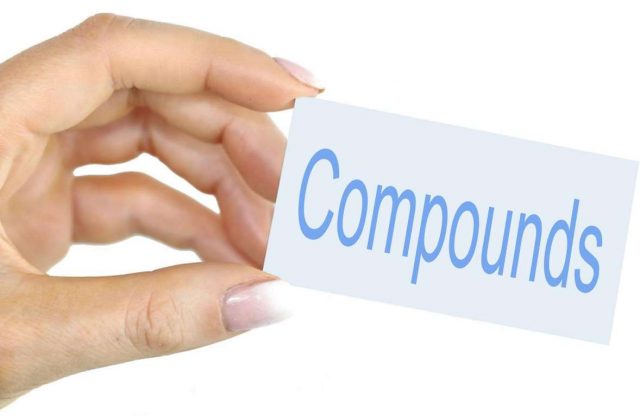When talking about chemical compounds, they can be found in multiple types. With different properties and classifications of each type, identifying each such type can be an easy task for you, especially after you go through this article.
So, let’s dive into conducting a comparison of organic and inorganic compounds here!
Various types of chemical compounds
Compounds can be divided into two categories:
- Organic Compounds.
- Inorganic Compounds.
Organic Compounds
Compounds containing carbon, whether solid, gaseous, or liquid, fall into the organic category. It is possible to describe organic compounds using numerous theories, such as structural formulas, space models, and Lewis structures. The mass spectra of organic compounds are commonly used to identify them.
Living organisms have organic molecules. Nucleic acids, lipids, carbohydrates, proteins, enzymes, and hydrocarbon fuels are examples. Carbon, hydrogen, and oxygen are all common elements in organic compounds.
- DNA
- Table sugar, C12H22O11, or sucrose
- Benzene, C6H6
- Gaseous methane
- Alcohol, C2H6O, often known as ethanol
Is there a reason why organic chemicals are so crucial?
Carbon is found in all living species. Hence chemical compounds are essential. The carbon exchange between plants and animals is necessary for photosynthesis and cellular respiration, for example. Organometallic compounds are formed when chemical compounds interact with metals.
Inorganic Compound
Compounds that do not have carbon as their major component are called inorganic. It’s essentially the reverse of what organic compounds are defined to be. Carbon and hydrogen are not bound together in the compounds.
Inorganic compounds include salts, chemicals, and metals. A total of about 100,000 inorganic compounds have been identified up to this point.
Inorganic chemistry is a branch of chemistry that studies the chemical and physical properties of substances. All of the inorganic compounds are derived from naturally occurring minerals or compounds and metals, hence making up the majority of them.
Salts, metals, substances derived from a single element and other molecules without carbon-hydrogen bonds are all considered inorganics. Carbon can be found in several inorganic compounds.
- Sodium chloride, the chemical name for table salt
- The CO2 is carbon dioxide.
- A diamond is a diamond (pure carbon)
- Silver
- Sulfur
What does the term “organic compound” refer to strictly?
A carbon atom is covalently linked with another element, such as hydrogen, oxygen, or nitrogen, to form a complex known as an organic compound. Compounds such as carbides, carbonates, and cyanides are the only carbon-containing ones that aren’t considered organic.
What is the total number of inorganic compounds?
There are around 19 million known carbon compounds in organic chemistry, but only roughly 500,000 inorganic chemistry. Inorganic compounds, on the other hand, are responsible for the majority of the world’s wealth.
What is the total number of inorganic compounds?
Inorganic compounds, on the other hand, are responsible for the majority of economic gains. Organic chemistry has roughly 19 million identified carbon compounds, but inorganic chemistry only has about 500,000.
Inorganic compounds are also simple because they cannot build the intricate molecular connections that carbon enables. An example of a primary inorganic chemical is sodium chloride, better known as household salt, and Na and Cl are needed in this formula.
Compounds that are both organic and inorganic.
Chemistry relies heavily on organic and inorganic substances. For example, organic chemistry deals with the study of organic molecules, while inorganic chemistry deals with non-living things. These people are considered to be a part of a sizable group.
These organic and inorganic compounds differ primarily because organic compounds always contain a carbon atom, while most inorganic compounds do not. Carbon-hydrogen or C-H bonds are found in nearly all organic molecules.
For the most part, you may distinguish organic substances from inorganic ones because they originate from biological processes. On the other hand, organic substances are the products of natural processes that have nothing to do with life on Earth or the findings of laboratory experiments undertaken by humans.
Carbon atoms aren’t the only Comparison of Organic and Inorganic Compounds; there are many others. These are thought to have features that are unique to each type of chemical.
Difference Between Organic and Inorganic Compounds:
Sr.no |
Organic Compounds |
Inorganic Compounds |
| 1. | Compounds classified as organic contain carbon atoms. | Carbon atoms are absent from the vast majority of inorganic compounds (some exceptions do exist) |
| 2. | Hydrogen, oxygen, carbon, and their derivatives are the building blocks of organic compounds. | They lack hydrogen and oxygen, as well as their derived products. |
| 3. | As a general rule, organic compounds are more volatile and highly flammable than inorganic ones. | These substances aren’t flammable and don’t exist in nature as volatiles. |
| 4. | In addition to solids, gases and liquids, these compounds can be found in all three forms. | These are made up of solids. |
| 5. | These cannot be dissolved in any liquid, including water. | In water, they dissolve, but in some organic solutions, they don’t. |
| 6. | Compounds with carbon-hydrogen bonds are included in this category. | There are no carbon-hydrogen bonds in these substances. |
| 7. | Most living organisms are composed primarily of organic compounds. | Non-living organisms contain these compounds. |
| 8. | Covalent bonds are formed in organic compounds. | Ionic bonds are formed between the atoms of molecules in inorganic compounds. |
| 9. | Heat and electricity are poor conductors in most aqueous solutions. | These are known to be excellent conductors of heat and electricity in aqueous solutions. |
| 10. | Hydrocarbon fuels, nucleic acids and sugars are just a few examples of organic compounds. | Nonmetals, salts, metals, acids, and bases are all examples of inorganic compounds, as are substances that are made up of only one element. |
| 11. | Temperatures at which they will melt and boil are both modest. | When compared to organic compounds, these have lower melting and boiling points. |
| 12 | These are more complex in nature and biological. | These are primarily mineral and lack a great deal of complexity. |
| 13 | You cannot make SaltsY from organic compounds. | You can make sodium and potassium salts from inorganic substances. |
| 14 | Organic compounds have a slow reaction rate. | The reactivity of inorganic compounds is very high. |
Conclusion
Compounds that are both organic and inorganic are part of chemistry. Organic compounds make up the majority of our body’s essential needs, as well as our entire structure. Compared to inorganic compounds, organic compounds contain carbon and are found in the liquid state, unlike inorganic compounds. You can find a carbon-rich organic compound in any phase of the universe

Speaks from heart, always too passionate and driven by emotions. Spins the words with kindness & sharpness, intriguing your ever-inscrutable minds.




